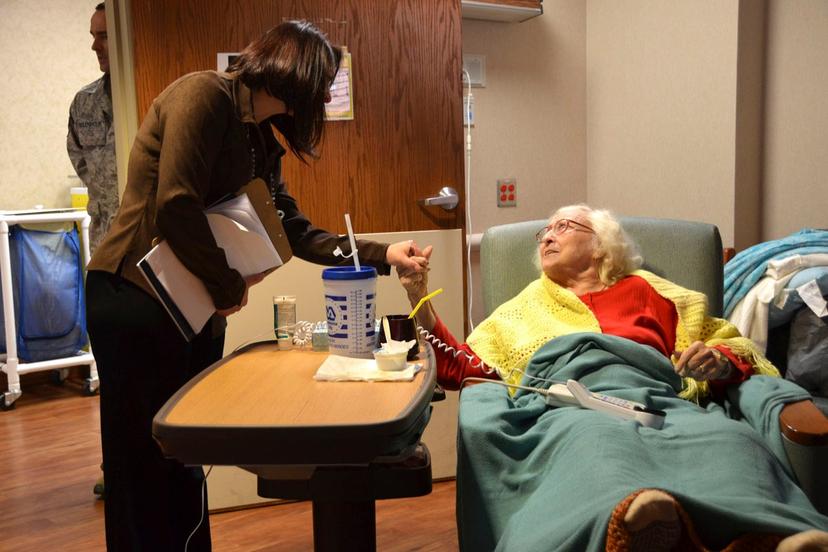Elder Care

Background
For most of history, elder care was not a separate industry because few people lived to old age. Primitive understanding of health care and low standards of public health caused most people to die of infectious disease in childhood, youth, or middle age. Few survived long enough to develop the chronic illnesses and gradual disabilities that afflict present-day seniors. Although a few physicians showed interest in diseases of the elderly as early as the Middle Ages, the term gerontology was not coined until 1903, and the field did not develop its own professional society until 1945.
Historically, the economic and social structure, together with the lack of useful medical interventions, permitted the comparatively few elderly persons who needed care to receive it from family members in the home. Those who had no family might receive care from a charity hospital or an almshouse, alongside mentally ill and homeless people; or they might receive visits from volunteers such as the women of the Charleston Ladies Benevolent Society, founded in 1813 to serve the "worthy poor" in general. Until the Industrial Revolution created a more urban culture, there was no widespread demand for elder-specialized health-care services, either at facilities or provided by nonfamily workers in the home.
However, over the course of the 19th century and the decades following, almshouse populations increasingly became dominated by the elderly. In 1880, seniors made up one-third of the residents, but by 1923 the proportion had increased to two-thirds. This happened largely because younger paupers were being diverted to other institutions, such as mental-health hospitals and orphanages, and it happened despite the establishment of charitable homes for the aged by civic and church groups who were trying to create an alternative to the almshouses. Some pioneering facilities were the Indigent Widows and Single Women’s Society, founded in Philadelphia in 1817, Boston's Home for Aged Women (1849), and the Brooklyn Home For Aged Men (1878). These alternative facilities had exclusive admission policies to bar immigrants and people judged of bad character and therefore housed few residents. In Massachusetts, for example, by 1910 they housed only one-tenth of one percent of the population.
The bad reputation of the almshouses drew attention to the problem of poverty among the elderly and therefore helped in the establishment of the Social Security program, which had the goal of allowing the elderly to stay in their own homes instead. The Social Security law passed in 1935 during the New Deal barred payments to almshouse residents and thus gradually emptied those facilities. For the care of those with chronic diseases and disabilities that were unsuitable for home care, facilities providing nursing services began to be established. In the 1950s, these institutions began to be regulated by the states, and a change to the Social Security law allowed residents to receive federal support. Federal funds from Medicare and Medicaid gave another huge boost to these facilities; from 1960 to 1976, the number of nursing-home beds increased by 302 percent, and revenues rose 2,000 percent. The elder-care industry had become big business.
In the 1970s, the nursing-home industry came under criticism for the substandard conditions at many facilities, and legislation was passed at the state and federal levels to clean up shoddy practices. By 2000, the nursing-home industry was bringing in $100 billion annually and taking care of 25 percent of those 85 and older.
Despite more stringent regulation, nursing homes have continued to bear a stigma of being "warehouses" for senior citizens. The Henry J. Kaiser Family Foundation reports that around 93 percent of facilities have deficiencies that threaten the health and safety of residents, as of 2011. As an alternative, seniors who are not fully independent but do not need constant nursing care may live in an assisted-living community. The term "assisted-living facility" is the most widely-used term for a common kind of state-licensed care center, although licensing boards vary on terminology. Some facilities, especially those that are older, resemble a hotel in that they offer a private or semi-private room and have central facilities for food preparation and dining. Bathrooms may be shared. Newer facilities are more likely to offer private apartments that have their own kitchens and bathrooms.
Some seniors live with a family member whose availability to provide care is limited by the need to work at a job outside the home. Adult day-care facilities, where the senior family member can be dropped off, provide support for these families. Still another alternative that is widely used is home health care by an aide who assists the elderly person with tasks such as dressing, bathing, food preparation, and medications.
Hospice is care given to those with terminal illnesses and focuses on relieving pain and suffering and on addressing the emotional and spiritual needs of both the patient and the survivors. The first hospice service in the United States began in 1974, with the Connecticut Hospice, which started as a volunteer service for home care and now runs a facility.
